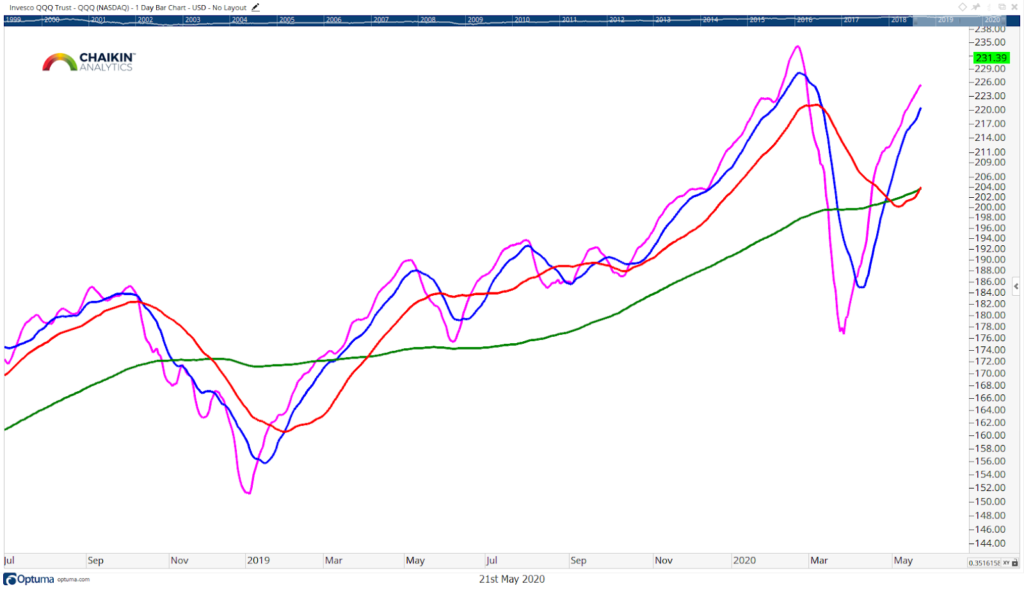I skew bearish. It’s not my fault really, I was imprinted early in my career. As I have written in the past, I began my career on the floor of the New York Stock Exchange in January 2000 with bright eyes toward the future. The dawn of a new millennium in the midst of a massive bull market that was led by new and exciting technological breakthroughs. The setup was perfect. Unfortunately, the market was priced for something beyond perfection. The Nasdaq topped in March 2000, the tech bubble burst and the bear market was underway two months into my career. In the midst of said bear market was the 9/11 terrorist attack just a few short blocks from the Exchange, a truly devastating day in the history of our nation. This was followed by accounting scandals that ultimately took down the likes of Enron and WorldComm. These were the key events that unfolded during the first two years of my career. I am convinced that somewhere deep down, they still lurk in my thought process. Because of this, I have a tendency to ‘stay bearish.” Bad things happen…quickly and all at once. So naturally following the 2008 / 2009 financial crisis, I was extremely late getting back into equities and missed the early part of the next leg of the bull market. I had to come up with a way to overcome my bias.
The step in the right direction is the recognition that I have a bias. We all do, some of us just don’t know it or want to admit it. I have it, I know it, I admit it. I took action to overcome it. Enter the four lines that help me get past my bias. The 8, 21, 50 and 200-day moving averages in pink, blue, red and green respectively.

After last week’s post, I received a lot of questions about how I manage my own ETF strategy. The answer is that it is completely rules-based. I use three inputs: Momentum, the Chaikin ETF Rating and these four moving averages. Momentum and the ETF Rating tell me which funds to own in each asset class. The moving averages tell me how much to own and when to manage risk. I follow these rules without exception. Additionally, I don’t ever make the call of being all-in or all-out. I simply adjust exposures based on my rules. Let’s use the Invesco QQQ Trust as an example. Please note: This is purely hypothetical as a proxy for how I manage my investments and an example of using rules and a system to overcome bias.
The fund has been leading for some time, so check the momentum box. At the same time, as we can see in PortfolioWise, the fund has had a Bullish or Very Bullish ETF rating for much of the preceding 12 months. Check the rating box.

Beginning in October 2019, there would be a full allocation to QQQ in my ETF portfolio. Here is that chart again with price added back in.

On February 25th two important developments took place. The 8-day moving average crossed the 21-day moving average from above. Additionally, the fund closed below the 50-day moving average. The combination of these two events would lead me to reduce my position to 75% of what it could have been. On March 9th, QQQ closed below the 200-day moving average and mt position would have been reduced again, to 50% of what it could have been based on my ideal allocations and weights. The fund was already 13% from its highs and I would be a seller. This would be easy for me because, remember, I skew bearish.
Now the hard part. On April 2nd, the 8-day moving average crossed the 21-day moving average from below…I would buy equities. I would not want to. The position would go from 50% to 62.5%. Six days later, QQQ closed above the 200-day moving average…I would buy equities. The position would go to 75% of its max potential size. People were losing their jobs, the economy was shut down around the world…I would hate buying equities but would do it anyway. On April 14th, QQQ closed above the 50-day moving average…Guess what I would do. And back to 100% of its potential size.
There are two important takes here. One is to recognize that there is a bias and to take steps to mitigate it. The second is to not try to time every top and bottom in the market. I would have been a seller on the way down and a buyer on the way up. Where is your bias? Do you have rules to overcome it?
